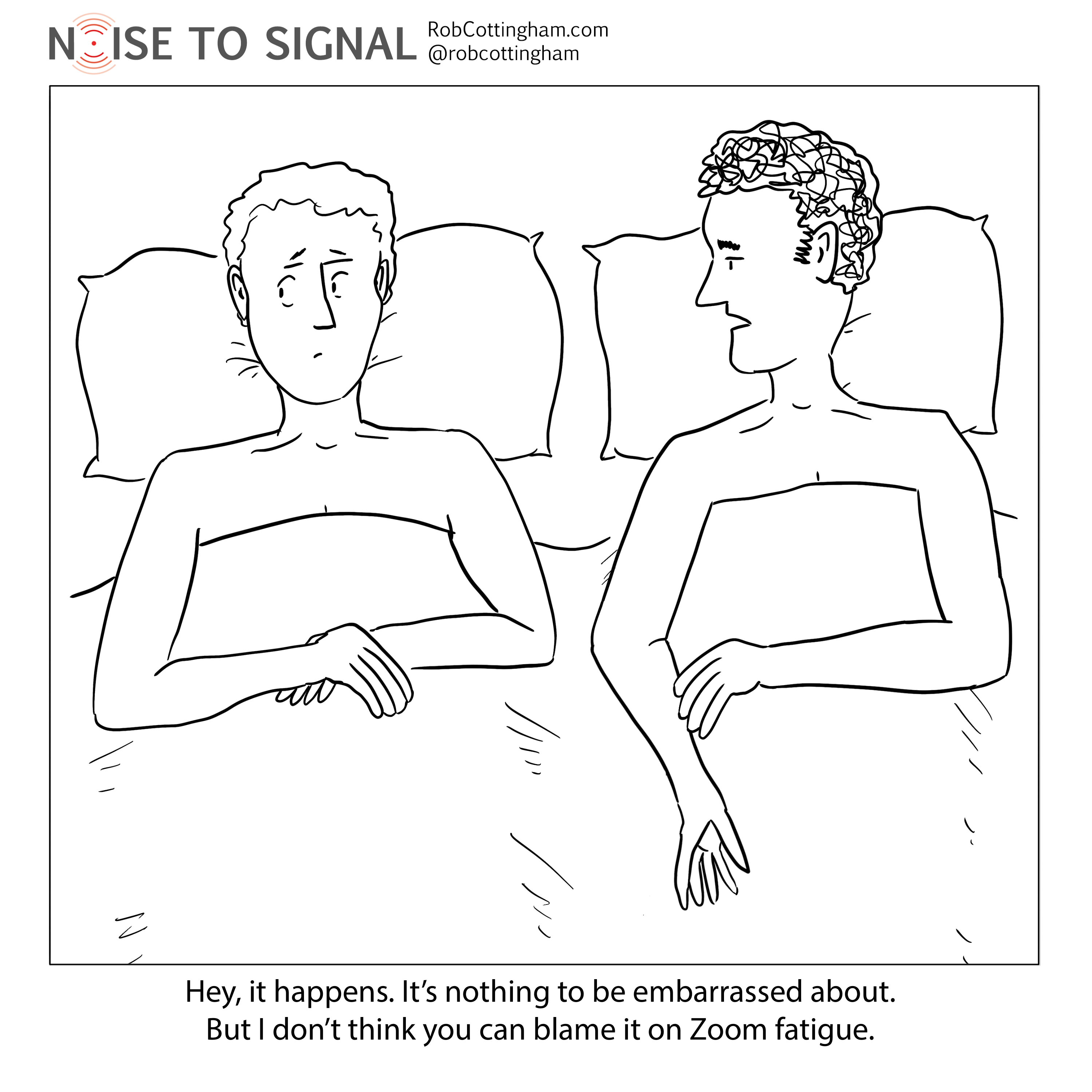For those of us for whom working from home was already our daily reality, there’s a certain “Welcome to the party, pal” quality to hearing complaints about Zoom fatigue. Not to be all hipster about it, but we were finding video meetings exhausting before it was popular.
Part of the problem may be that we nearly always only see each others’ heads and shoulders, and we’ve become used to communicating with each other using our whole bodies. The way we hold ourselves, the gestures we make, that shift of weight from one foot to another: These all communicate volumes, and we’ve shut ourselves off from that.
In a widely-read Medium piece, Hanna Thomas Uose argues that the effect is actually “low-key traumatic”. Without those body-based signals we’ve learned to unconsciously rely on when we talk with someone, we’re never quite at ease, and never really feel safe. The fight-or-flight mechanism is constantly on deck, squirt pistol of adrenaline in hand, ready to go at a moment’s notice.
I found out about her article when I was doing research for an episode of my own podcast about why and when it may make sense to back away a little from the camera, especially if you’re not just a meeting participant but a presenter. Creative use of that space could lend a lot of expressiveness to your delivery — although, as I warn, “The bad news? You’re gonna need to start wearing pants again.”
By the way, everyone talks about Zoom fatigue, but nobody talks about Slack or Microsoft Teams fatigue. Look, I love me a good threaded conversation, and I think Slack is absolutely brilliant in its improvement over email. But between the proliferation of threads, channels, chats and more, I sometimes feel like I’ve traded one inbox for a dozen or more.

